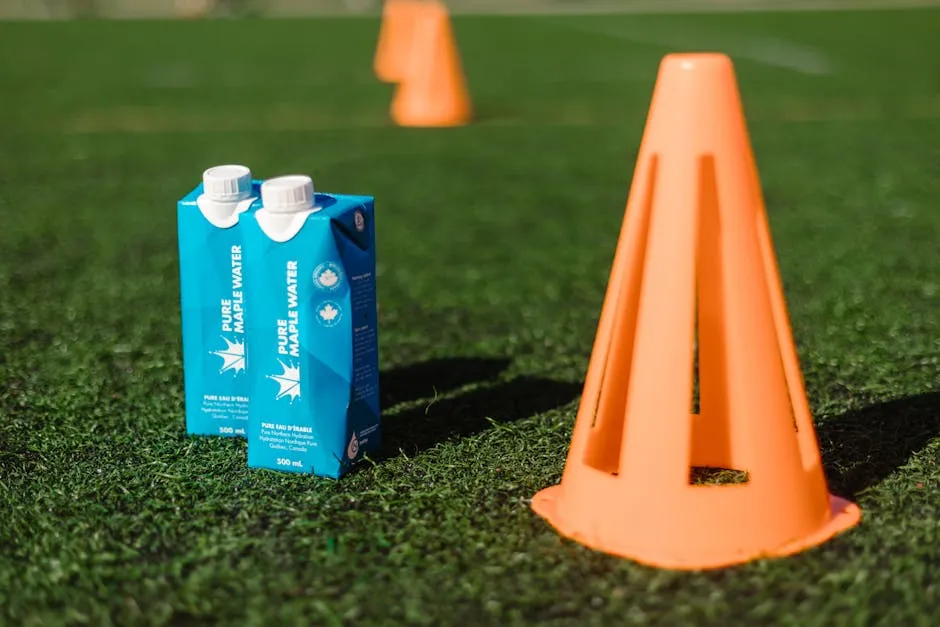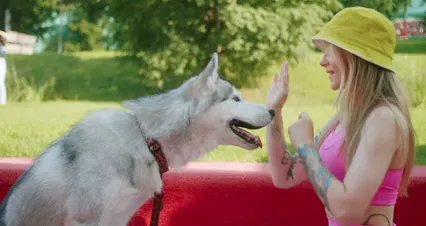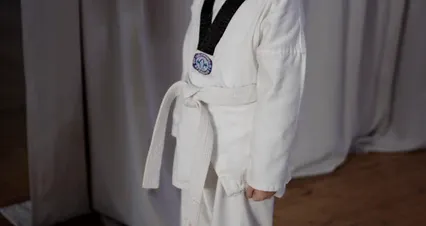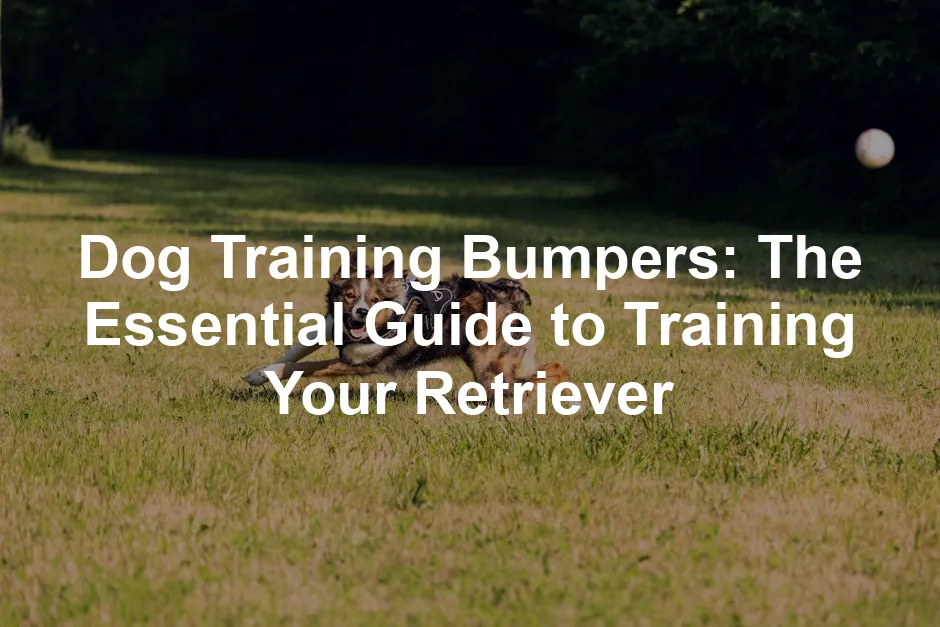Introduction
Dog training bumpers are essential tools for retriever training. They help teach dogs to fetch and retrieve accurately. These bumpers are crucial for hunting and obedience training. Various types exist, each serving different purposes, from canvas to plastic. Choosing the right bumper can significantly impact your training success.
Understanding the importance of dog training bumpers can enhance your training sessions and improve your dog’s skills.
Summary and Overview
Dog training bumpers play a vital role in developing your retriever’s skills. They promote proper mouth grip, enhance marking, and facilitate blind retrieves. Using bumpers strengthens the bond between you and your dog, making training sessions enjoyable and effective. Retrievers thrive on tasks, and bumpers provide an engaging way to harness their instincts.

In this guide, you will learn about the different types of dog training bumpers, their benefits, and how to select the right one for your training needs. We’ll also cover effective training techniques using bumpers, ensuring your retriever becomes a reliable hunting companion and a well-mannered pet.
Speaking of reliable companions, consider enhancing playtime with the Chuckit! Ultra Ball. It’s perfect for fetch enthusiasts, providing endless fun and exercise for your furry friend!
Types of Dog Training Bumpers
Canvas Bumpers
Canvas bumpers are made from lightweight fabric, often with a foam core. They are gentle on a puppy’s developing teeth, making them suitable for early training. These bumpers are easy for puppies to carry and encourage proper retrieval techniques. However, once your dog has adult teeth, canvas bumpers may not be ideal due to their tendency to retain moisture. This can lead to a musty smell over time.
Canvas bumpers are best used in controlled environments, like training fields or yards. They work well for basic retrieval drills and can float on water, making them useful for introducing young dogs to water retrieves. Just be mindful of the weather, as wet canvas can weigh down and become difficult for your dog to manage.
So, if you’re training a puppy, canvas bumpers are a great option. They’re soft, lightweight, and perfect for building confidence. Just remember to transition to a more durable option as your dog matures. For a reliable canvas option, check out the Lucky Dog Canvas Training Bumper.
Plastic Bumpers
Plastic bumpers are known for their durability and versatility. They withstand rough play and harsh conditions. Whether it’s land or water training, plastic bumpers shine in various environments. For younger dogs, these bumpers are often too heavy. Puppies benefit from lighter options like canvas. Once your dog matures, plastic bumpers become ideal.
Seasonal considerations are essential too. In winter, plastic can become icy and hard. This may feel uncomfortable for your dog. It’s wise to switch to softer bumpers during colder months. Consider using dead-fowl trainers instead. They provide a more forgiving option for winter training.
Speaking of dead-fowl trainers, the Dokken Dead-Fowl Trainer is a fantastic choice for realistic training experiences!

Dead-Fowl Trainers
Dead-fowl trainers mimic the size and weight of actual game birds. They offer unique benefits for teaching proper retrieval techniques. Dogs learn to pick up without shaking or damaging the dummy. This promotes good habits and reinforces gentle handling.
Popular brands like Dokken and Tanglefree lead the market. Dokken’s trainers, for example, are designed to simulate real birds. They come in various species, enhancing training realism. Tanglefree offers durable options that withstand rigorous use. Each brand has unique features catering to different training needs.
For those looking for high-visibility options, the GUNNER High-Visibility Training Bumper is an excellent choice for keeping your training sessions effective!
Selecting the Right Bumper
Size Considerations
Choosing the right bumper size is crucial for effective training. Bumpers generally come in two standard sizes: 2 inches by 12 inches and 3 inches by 12 inches. The smaller size is great for young pups. It’s easier for them to hold and carry. For adult dogs, the larger size offers better visibility, especially at a distance.
Using the wrong size can hinder training progress. A bumper that’s too large may discourage a pup. Conversely, a tiny bumper can be challenging for larger breeds. Always match the bumper size to your dog’s age and training level for optimal results.

Color Choices
Color plays a significant role in visibility for dogs during training. Bright colors like white and orange stand out in most environments. White bumpers are excellent for low-light situations. Orange is particularly useful for blind retrieves, as dogs struggle to see this color.
For water training, contrast is essential. Black or black-and-white bumpers may be ideal against snowy backgrounds. Selecting the right color based on the training scenario enhances effectiveness. It helps your dog locate the bumper quickly, making training sessions more productive.

Material Selection
When choosing a dog training bumper, material matters. Each type offers unique benefits. Canvas bumpers are soft and lightweight. They’re perfect for puppies. The gentle texture helps protect young teeth. However, they can absorb moisture and develop odors over time.
Plastic bumpers provide durability. They withstand rough play and various weather conditions. This versatility makes them great for both land and water training. However, they may be too heavy for younger dogs. It’s best to transition to these once your pup matures.
Dead-fowl trainers are another option. They mimic the feel of real game birds. This can enhance your dog’s retrieval skills. The design encourages gentle handling, which is crucial for developing good habits.
Ultimately, the right material can significantly influence your dog’s training experience. A bumper that fits your dog’s needs will make sessions more enjoyable and effective. For a great material option that also doubles as a chew toy, try the Tuffy’s Ultimate Dog Toy.

Training Techniques Using Bumpers
Basic Retrieval Drills
Starting with basic retrieval drills is essential for beginners. A simple method is to throw the bumper a short distance. Encourage your dog to fetch it back. Use excited tones and praise when they succeed. This positive reinforcement builds confidence.
If your dog struggles, try to simplify the task. Start with shorter distances or use a more visible bumper. Gradually increase the distance as your dog becomes more comfortable.
Another effective exercise is the “mark and retrieve.” Toss the bumper and point to where it lands. This teaches your dog to focus on the bumper’s location. Always reward them for completing the task.
If your dog drops the bumper before returning, gently correct them. Encourage them to hold it until they reach you. Consistency will lead to improvement.

Advanced Techniques
Once your dog masters basic drills, it’s time for advanced techniques. Incorporate bumpers into drills that challenge your dog’s focus and obedience. One effective exercise is the “blind retrieve.” Toss the bumper out of sight and guide your dog to find it. Use verbal cues to direct them.
Another drill is the “double retrieve.” Throw two bumpers in different directions. This helps your dog learn to remember multiple retrieves. Make sure to vary the order to keep them sharp.
You can also introduce distractions. Have someone walk by during the retrieve. This challenges your dog to stay focused on the task. Reward them for ignoring distractions and completing the retrieve.
Lastly, consider mixing in scent training. Use bumpers with scent trails to teach your dog to follow their nose. This adds an exciting layer to their training.
With these techniques, you’ll enhance your dog’s retrieving skills, making them a reliable companion in the field. And for those longer training sessions, consider the PetSafe Automatic Ball Launcher to keep the fun going!

Incorporating Scent into Training
Scent training is crucial for retrievers. It enhances their natural instincts and improves performance. When dogs learn to use their noses, they become more effective in locating objects. This skill is especially valuable in hunting scenarios.
To scent bumpers effectively, start by using feathers or bird wings. Insert these into the bumper to mimic the smell of real prey. You can also use scent sprays designed for dogs. Apply the scent lightly on the bumper. Make sure not to overpower it; a subtle hint works best.
When introducing scented bumpers, keep sessions short and engaging. Reward your dog when they successfully identify the bumper by scent. Over time, increase the complexity of the exercise by hiding the bumper in challenging locations. This method builds confidence and sharpens their tracking skills.

Common Questions About Dog Training Bumpers
Do I need multiple bumpers for training?
Yes, having multiple bumpers is advisable. A good starting point is six to twelve bumpers. This range allows for effective training without constant interruptions. If you’re working on various drills, more bumpers ensure you won’t run out mid-session. More bumpers also help to avoid confusion for your dog.
For a great set of training pads, check out the AmazonBasics Dog Training Pads. They can be quite handy for indoor training!

Do dog training bumpers need to be scented?
Not necessarily! Many trainers believe bumpers don’t need added scents. Dogs can usually locate bumpers using their natural sense of smell. However, using scent can enhance the training experience and mimic real hunting scenarios. It’s a great way to teach dogs to associate certain smells with specific tasks.

What brands of bumpers are recommended?
Several reputable brands offer quality dog training bumpers. Here are a few to consider:
- Avery: Known for their durable and versatile bumpers, ideal for various environments.
- Dokken: Offers realistic dead-fowl trainers that help reinforce gentle handling.
- GUNNER: Features high-visibility options, designed for both scent training and retrieving.
- Lucky Dog: Provides affordable and reliable bumpers suitable for all training levels.
Each brand has its unique features, so choose based on your training needs. And if your dog is feeling a bit anxious during training, you might want to consider a Snuggle Puppy Heartbeat Stuffed Toy to comfort them!

FAQs
Conclusion
Choosing the right dog training bumpers is essential for success. Quality training equipment enhances your dog’s learning experience. It promotes effective communication between you and your furry friend. Investing in quality bumpers pays off in improved retrieving skills and a stronger bond.
We encourage you to select bumpers that suit your dog’s needs and training level. Have you used training bumpers before? Share your experiences in the comments or ask any questions you may have!
Please let us know what you think about our content by leaving a comment down below!
Thank you for reading till here 🙂 And don’t forget to keep your furry friend hydrated with a Dog Water Bottle with Bowl during your training sessions!
All images from Pexels





